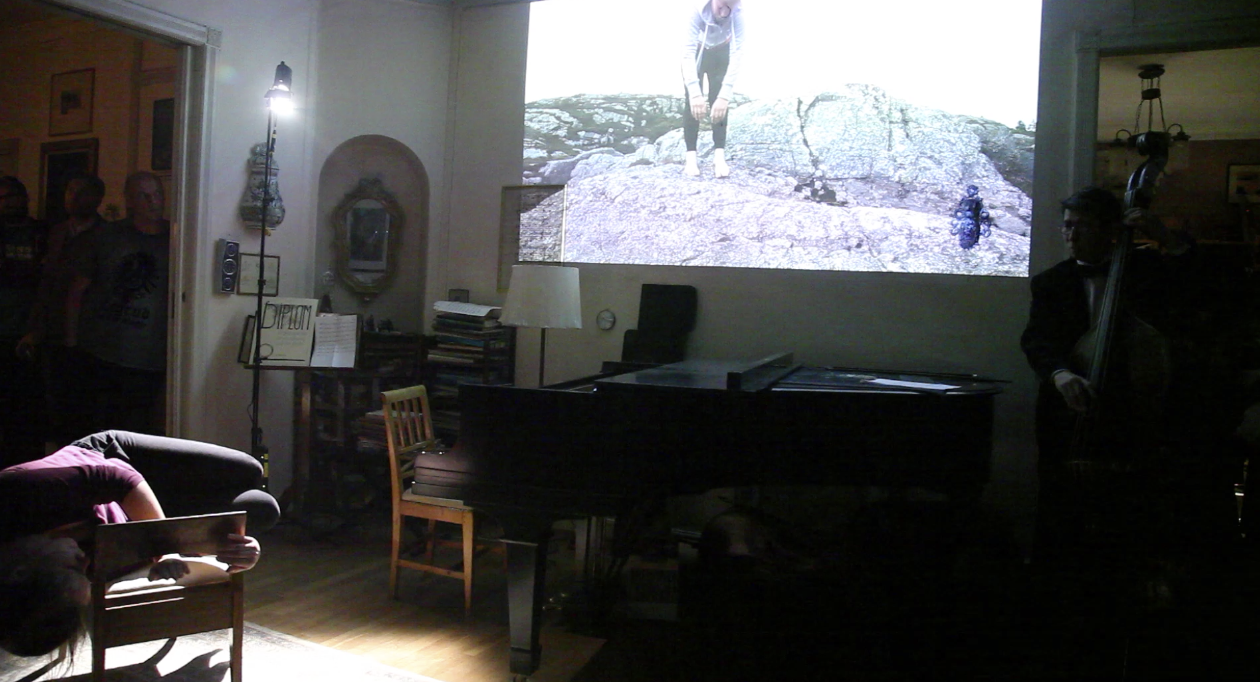





How to transform stories from body to body, and from body to object
A Performance
2013, Kalfarlien 18, Bergen, Norway
In collaboration with Karen Eide Bøen(NO) and the Tommy Kotter Trio (SE).
The installation consists of two videos and a performance. I collaborated with dancer Karen Eide Bøen, and at first asked her to perform my private stories, which I have written down before hand. Everyday for a week she danced for 30 minutes, and the dance was an improvisation of Geography of A, which I had shown the year before at HKS. The work was dealing with questions such as, which stories are mine and how can I share it? When do bodies create a history of their own and can objects in a similar vein also be infused with stories and therefore get a history and a memory. The second video projection was a dance at Sotra, where the landscape in the dance is being treated as object and at the same time as subject. Proposed idea here was the simplicity of relating with and transferring from, where time spend is the means of exchange. Between myself and Karen, the work became more and more about, creating something and giving that something out of our hands again and again. Trusting the other person to do as they will with the stories or footages. As a rather last minute spur of magic, we were joined by the Tommy Kotter Trio, from Sweden who joined the performance during the rehearsals, after which they joined us for the opening night. This work was very much in process, and what I have learned from it is: What does it mean to act as a director in a collaboration? Where is the work, is it what I have asked them to do, or is it what has happened between us, the collaborators? Is it somehow the negotiation that happened and the consensus that was formed based on a very loose and intuitive platform.
As part of the work, there was a another 30” video, shown in the dining room on a small Ipad. The Ipad was hung between other paraphernelia, such as ceramic plates and old paintings, on the wall.
This work was realized with support from BEK, in equipment and time.
Photo credit: Apichaya Wanthiang